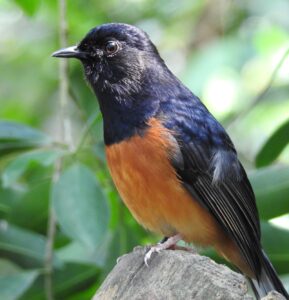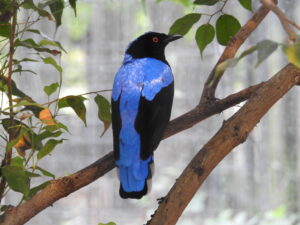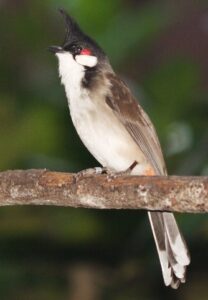Text by Chris R. Shepherd and Boyd T. C. Leupen from Monitor
All birds native to Thailand are protected under Thai law. However, illegal trade persists. In order to understand current levels of trade and to inform further efforts to end this illegal trade, a study by Monitor, TRAFFIC and the Oxford Wildlife Trade Research Group looks at the trade in Thailand’s native birds in the notorious Chatuchak Market has been published.
Over the years, a number of surveys have been carried out on the bird trade in this market. We analyzed unpublished trade data, gathered during 30 market surveys conducted between 2007 and 2022. We then compared these data to trade records from three published studies, accounting for a total of 131 surveys between 1966 and 2001, to determine historical trade trends. In addition, we carried out a three-month online trade survey between December 2019 and January 2020 to assess online trade levels. During the 30 market surveys, we found a total of 7,126 individuals, belonging to 145 native species, all of which are protected under Thai law. The mean numbers of recorded native birds found during these surveys (238) were much lower than the mean numbers found during surveys in the late 1960s (5,789) and late 1980s (2,233) and slightly higher than those found during surveys in the early 2000s (189), suggesting a decline in the open availability of native birds in the market over the past fifty years. This decline was found to be particularly steep from 2016 onwards, coinciding with increased enforcement efforts.
During our more recent online surveys, we found 887 individuals of 50 native species, confirming the importance of the internet as an alternative trading space in Thailand’s native bird trade.
The top-ten most recorded species across 17 Facebook groups between 20 October 2019 and
20 January 2020 were Red-whiskered Bulbul Pycnonotus jocosus (n=325), White-rumped Shama Copsychus malabaricus (n=117), Asian Fairy Bluebird Irena puella (n=71), Greater Green
Leafbird Chloropsis sonnerati (n=45), Common Hill Myna Gracula religiosa (n=37), Stripe-throated Bulbul Pycnonotus finlaysoni (n=34), Lesser Green Leafbird Chloropsis cyanopogon (n=31), Blue-winged Leafbird Chloropsis moluccensis (n=23), Black-throated Laughingthrush Pterorhinus chinensis (n=19) and Black-crested Bulbul Rubigula flaviventris (n=16).

In conclusion, while increased enforcement efforts have led to a clear decline in the open availability of native protected birds at Chatuchak Weekend Market since 2016, the illegal trade appears to have at least partly shifted online. As Thailand’s principal wildlife legislation (WARPA 2019) has jurisdiction to act on illegal online trade, we recommend increased online trade monitoring and enforcement, as well as continued monitoring and enforcement efforts in physical markets. We also recommend more awareness campaigns to continue to raise awareness in Thailand about the illegality of the trade in native birds and the importance of keeping these birds in the wild.
This study is a part of the Monitor Songbird Lab efforts which in part is supported by Silent Forest

